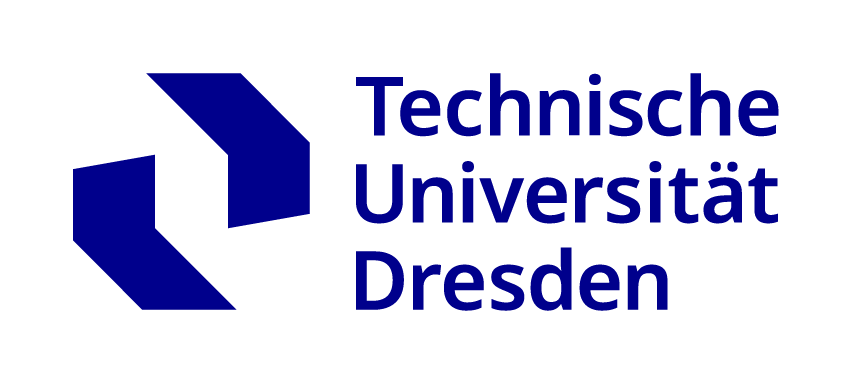Chair of Human-Computer Interaction (MCI) (Professorship)
Parent Units:Technische Universität Dresden (TUD)
German name: "Professur für Mensch-Computer Interaktion (MCI)".
Contact
| web: | https://tu-dresden.de/ing/informatik/ai/mci | |
| email: | ||
| phone: | +49 (0)351 463-38467 | |
| fax: | +49 (0)351 463-38491 | |
| postal address: | Technische Universität Dresden (TUD), Chair of Human-Computer Interaction (MCI), 01062 Dresden, Germany | |
| office address: | Technische Universität Dresden (TUD), Chair of Human-Computer Interaction (MCI), Nöthnitzer Str. 46 (Andreas-Pfitzmann-Bau, Room 1055), 01187 Dresden, Germany | |
| partner: | Technische Universität Dresden | |
Expertise
"Human-Computer Interaction (HCI) is a discipline concerned with the design, evaluation and implementation of interactive computing systems for human use and with the study of major phenomena surrounding them.” [ACM, SIGCHI]
Die MCI analysiert
- den Kontext von Computern
- den Faktor Mensch
- den Entwicklungsprozess von Benutzeroberflächen
- die Architektur von Programmierschnittstellen
Forschung
Barrieren entstehen z.B. im Web, im E-Learning, beim Zugang zu graphischen Notationen, oder z.B. im Umgang mit mobilen Geräten. Wir suchen dafür nach Lösungen.
An der Professur MCI stehen Menschen mit besonderen Anforderungen im Mittelpunkt, die Computer verwenden.
Wir entwickeln Lösungen z.B. für den Zugang blinder Menschen zu grafischen Benutzeroberflächen durch neuartige Screenreader im Projekt Hyperbraille. Mehr als 50 Probanden haben die Ergebnisse getestet. Darauf aufbauend ist das Projekt Tangram entstanden, um das gemeinsame Zeichnen von blinden und sehenden Menschen mittels einer Stiftplatte zu ermöglichen. Das aktuelle Projekt MOSAIK hat zum Ziel, daß blinde Menschen zunehmend selbständige Grafiken anfertigen können.
Um die Mobilität blinder Menschen zu verbessern, entwickelten wir im Projekt MOBILITY eine App zur Navigation im Frankfurter Flughafen. Es gelang insbesondere ein geeignetes Messverfahren zu entwickeln, das hilft die Genauigkeit der mit der App erworbenen mentalen Karte zu bestimmen. Ein Problem in Innenräumen sind jedoch Hindernisse. Im Projekt Range-IT entwickeln wir gemeinsam mit den Partnern ein tragbares System zur Hinderniserkennung. Die mutimodale Interaktion stellt jedoch noch hohe Anforderungen an den Benutzer.
Projekte wie Multireader und mAIS zeigten auf, daß der Zugang zu Büchern oder Echtzeitinformation für Fahrgäste personalisiert werden kann, die blind, sehbehindert, gehörlos, hörbehindert, oder körperbehindert sind. Einige Formen von Behinderung wie Demenz oder Dyslexie sind jedoch so vielfältig, daß eine umfangreiche Infrastruktur und insbesondere semantische Beschreibungen notwendig sind, um Benutzungsoberflächen an diese Zielgruppen anzupassen. Im Projekt Cloud4All wurden diese Infrastruktur entwickelt.
***********English***********
"Human-Computer Interaction (HCI) is a discipline concerned with the design, evaluation and implementation of interactive computing systems for human use and with the study of major phenomena surrounding them.” [ACM, SIGCHI]
HCI analyzes
- context of computers
- human factors
- processes for development of user interfaces
- architecture of programming interfaces
Research
Accessible Computing concerns, for example, lack of access to the Web, to eLearning, to graphical notations, or the utilization of mobile devices. We investigate solutions for people with a disability.
At the Chair of HCI people with special needs who are using computers are in the focus of our research.
We develop solutions such as access to the graphics in graphical user interfaces by novel screen readers in project Hyperbraille. More than 50 participants have evaluated the results. In the following project Tangram has been awarded to us, in order to allow the collaborative production of tactile graphics together with a pin-matrix device. The ongoing project MOSAIK aims at a solution allowing blind people to create graphics and draw by themselves.
For the improvement of mobility of blind people we developed in MOBILITY an app to support navigation inside Frankfurt airport. A novel approach for measuring the accuracy of the user's mental map was created. A major problem for indoor navigation are obstacles. In project Range-IT we develop together with partners a wearable system for obstacle recognition. The multimodal interaction with the context is still demanding for the user, however.
Earlier projects such as Multireader and mAIS showed successfully how to personalize books to readers, and realtime information for transportation passengers, even if they are blind, have low vision, are hearing impaired, or are physivcally impaired. Other types of disability such as dementia or dyslexia are very heterogeneous. This requires a considerable infrastruture and in particular semantic technologies for the adaptation of user interfaces to these target grous. Project Cloud4All has developed such an infrastructure covering a wide range of applications and operating systems.
instruments
 View instruments (3)
View instruments (3)
Affiliations
Parent Units
| name | type | actions |
|---|---|---|
| Institute of Applied Computer Science | Institute |
Last Update
Last updated at: 2018-08-08 13:52 CEST

